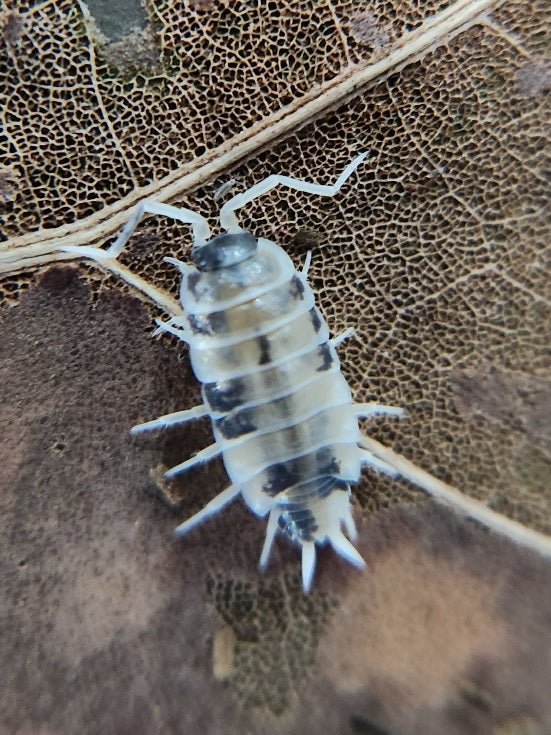Adding botanical seed pods and leaves to your aquarium can transform it into a stunning, naturalistic haven for your aquatic inhabitants. From the earthy tones of Sterculia pods to the intricate shapes of Magnolia leaves, these botanicals release beneficial tannins, lower pH, and provide shelter. However, if you've ever added them, you've likely noticed a fuzzy, sometimes slimy, growth appearing on their surfaces. Don't panic! This isn't typically the dreaded "mold" you might imagine, but rather a completely natural and often beneficial phenomenon: biofilm.
What Exactly is This Fuzzy Stuff?
What you're observing on your new botanical additions is primarily a biofilm. Biofilms are communities of microorganisms (like bacteria, fungi, and algae) that adhere to surfaces in a moist environment. In your aquarium, these microscopic residents quickly colonize the rich organic surfaces of seed pods and leaves.
There aren't really "different types of biofilm seed pods produce" in the sense of distinct visual categories, but rather variations in the dominant microbial populations within the biofilm. You might see:
- White or Translucent Biofilm: This is the most common and often appears as a soft, cotton-like fuzz. It's primarily composed of beneficial bacteria and some harmless fungi breaking down the organic matter from the botanicals.
- Slightly Brownish or Greenish Biofilm: This can also occur, sometimes indicating the presence of diatoms (a type of algae) or other single-celled organisms that are also part of the natural ecosystem.
It's important to differentiate this natural biofilm from problematic "mold" that would indicate unhealthy tank conditions (e.g., uneaten food rotting, poor filtration leading to anaerobic spots). True problematic mold usually presents as a more persistent, often darker, and more pervasive growth that doesn't subside.
Why is This Biofilm Safe (and Even Beneficial)?
The "mold" or fuzzy growth you're seeing on your seed pods is overwhelmingly safe and not a cause for concern in a healthy, established aquarium. Here's why:
- Natural Decomposition: It's a sign that the natural decomposition process is underway. The microorganisms are breaking down the cellulose and other organic compounds in the botanicals, releasing beneficial substances into the water.
- Food Source: This is the most exciting part for your aquatic residents! This biofilm is an incredibly rich and natural food source for many aquarium inhabitants.
- Habitat Enrichment: The textured surface created by the biofilm provides additional microhabitats for tiny organisms, further enriching your aquarium's ecosystem.
The Biofilm Cycle: Patience is a Virtue!
So, how long does this "cycling" of biofilm take? The appearance and subsequent reduction of this initial biofilm is a natural process that usually takes 1 to 3 weeks. Here's a general timeline:
- Days 1-7: You'll typically see the most prominent growth of the white, fuzzy biofilm during this initial period as the microorganisms rapidly colonize the new surfaces.
- Weeks 2-3: The growth will start to subside as the most readily available organic compounds are broken down. At this point, your aquarium inhabitants will likely begin to discover and enthusiastically graze on the biofilm.
- Beyond Week 3: While biofilm will always be present to some degree on botanicals, the initial "bloom" will have passed. The pods will integrate seamlessly into your aquascape, continuing to release tannins and provide shelter.
Nature's Snack Bar: Let Your Fish and Shrimp Feast!
Once the initial "cycling" of the biofilm is complete and the fuzziest growth has diminished, you'll witness a fascinating natural behavior in your tank. Your fish and shrimp will readily consume the biofilm left by the microorganisms!
Shrimp, especially dwarf shrimp like Neocaridina and Caridina species, are absolute biofilm connoisseurs. They will meticulously pick and graze on the surfaces of the pods and leaves for hours. Many bottom-dwelling fish, plecos, otocinclus, and even some smaller community fish will also nibble on this nutritious growth. It's a fantastic source of supplemental food and enrichment for them.
So, the next time you introduce new botanical seed pods or leaves to your aquarium and see that fuzzy white growth, take a deep breath and appreciate the beauty of nature at work. It's not a problem, but rather a vital part of creating a thriving, self-sustaining ecosystem for your beloved aquatic pets. Happy botanic aquascaping!



